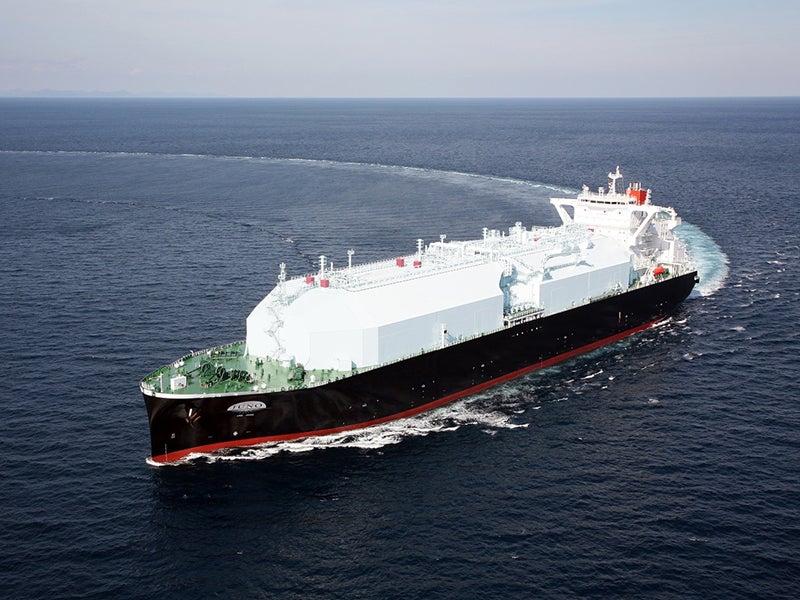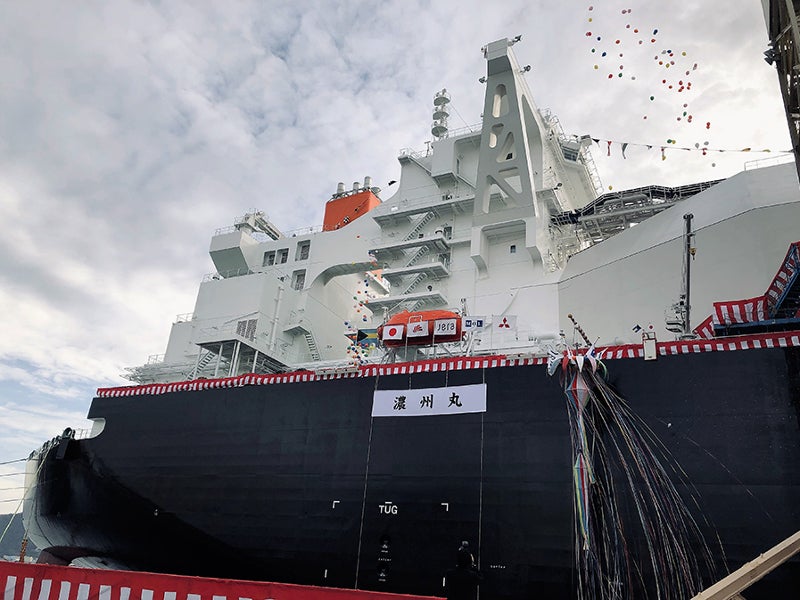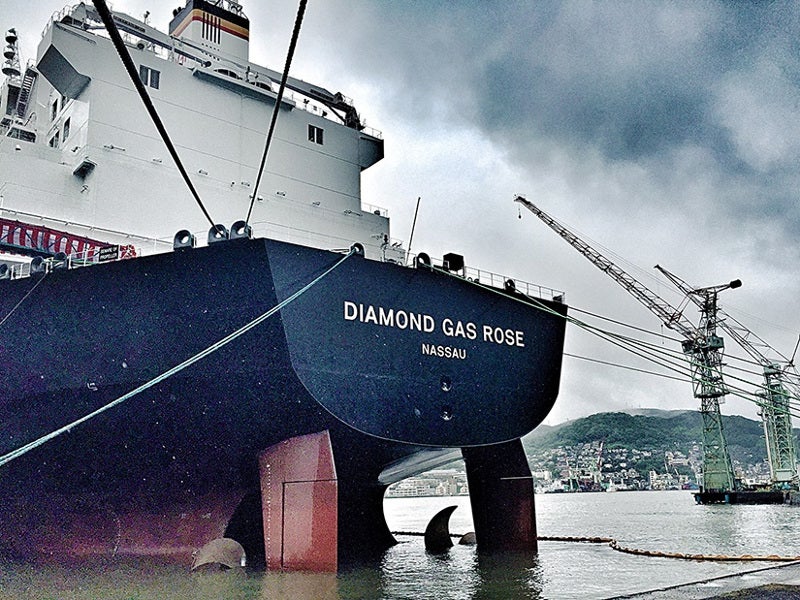The Sayaringo STaGE next-generation MOSS-type liquefied natural gas (LNG) carrier was developed by Mitsubishi Heavy Industries (MHI). It is an advanced version of the Sayaendo LNG carrier built by MHI.
The Sayaringo STaGE features a continuous cover over the tanks with the upper semi-sphere of the tanks being bigger than the lower. The ship is named after Sayaringo as it features ringo, or apple, shaped tanks enclosed by a saya, or a pea-like, cover.
The Sayaringo STaGE is intended to transport LNG from North American shale gas deposits to Japan via the Gulf of Mexico, Panama Canal, and the North Pacific Ocean.
Sayaringo StaGE orders and deliveries
Nippon Yusen Kabushiki Kaisha (NYK Line) placed a contract with MHI for two Sayaringo StaGE carriers in May 2015.
MHI secured two contracts for the delivery of two LNG carries to two joint ventures formed by Chubu Electric Power with Mitsui OSK Lines (MOL) and NYK Line respectively, in September 2015.
The first Sayaringo STaGE vessel was christened Diamond Gas Orchid in April 2018. It was delivered to a joint venture between NYK and Mitsubishi Corporation (MC) in July 2018. The remaining vessels in class are currently under construction.
Design and features of Sayaringo StaGE LNG carrier
The Sayaringo STaGE-class vessel incorporates lightweight twin-skeg hull and offers low-wind resistance. It also retains the proven technologies of the Sayaendo-class, with further improvements, making it the next-generation LNG carrier.
Highly versatile dimensions of the ship ensure it meets the New Panamax limits and make it compatible with more than 100 LNG terminals worldwide. The LNG carrier is designed to resist adverse weather conditions. The vessel features a hybrid propulsion plant integrating an efficient twin-shaft steam turbine.
The LNG carrier has an overall length of 297.5m, breadth of 48.9m, depth of 27m, and a draft of 11.5m. The gross tonnage of the ship is 144,828t, while the cargo carrying capacity is 165,000m³.
Deck layout and cargo storage capacities
The layout of the cargo compartments and continuous tank cover of the vessel retain the configuration of the Sayaendo. The cargo manifolds are positioned between the second and third tanks, while the cargo machinery room is placed under the tank cover between the third and fourth tanks.
The complex structures for pipes, wires, and passageway are positioned above the cover, resulting in a simpler layout than that of conventional carriers with semi-sphere tank covers. The innovative layout also enables easy maintenance of the systems on board.
Based on the MOSS-type LNG tank design concept, the structure of the LNG tanks has been optimised for volumetric efficiency and cargo capacity while meeting the New Panamax limits.
The composition ratio of the tank’s semi-spheres, cylinder, and torus can be altered to reduce or increase the holding capacity of the tanks between 165km³ and 180km³, based the shipping requirements of the customers.
Tanks are made of aluminium and their external surface is coated with heat insulator with varied thickness based on the structures around the tank and conditions. The concept further ensures desired heat insulation for the entire tank form.
Sayaringo StaGE propulsion
The Sayaringo-class LNG carrier is powered by Steam Turbine and Gas Engine (StaGE) propulsion system.
The hybrid propulsion plant integrates an ultra-steam turbine (UST) plant on the port side, as well as a dual-fuel diesel engine (DFE) and a propulsion electric motor (PEM) on the starboard side. The dual-fuel engine can burn both gas and oil.
There is approximately 20% less CO₂ created by the STaGE plant compared to traditional turbine propulsion plants. The ship emits approximately 40% less CO₂ per cargo unit compared to conventional LNG tankers powered by a conventional turbine plant.
The propulsion system enables the Sayaringo StaGE-type carrier to sail at a service speed of 19.5k.






